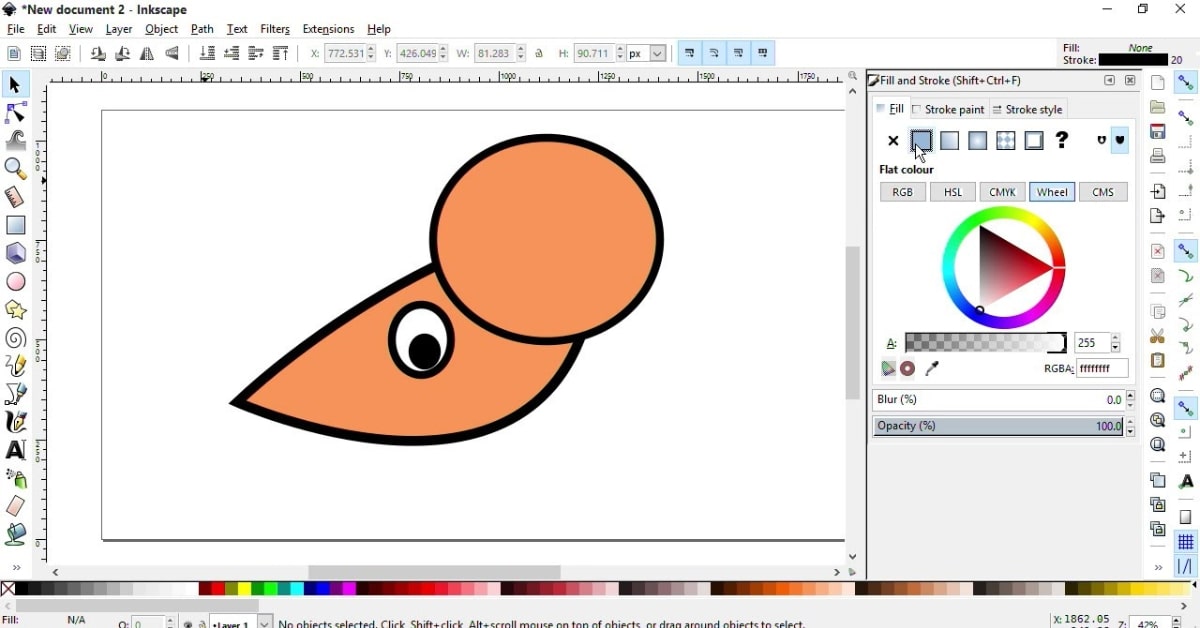Inkscape, the free and powerful vector graphics software, offers a robust set of tools for transforming raster images into scalable and editable vector formats. Understanding the process of raster to vector conversion in Inkscape is pivotal for designers, artists, and creators seeking versatile and high-quality graphics. This comprehensive guide will walk you through the steps, techniques, and benefits of raster to vector conversion using Inkscape.
Steps to Convert Raster to Vector in Inkscape
- Import Raster Image: Open Inkscape and import the raster image you want to convert into a vector format by clicking on “File” and then “Import.”
- Trace Bitmap: Select the imported raster image, navigate to the “Path” menu, and choose “Trace Bitmap.” This opens a dialog box where you can adjust settings for the tracing process.
- Adjust Trace Settings: In the Trace Bitmap dialog box, experiment with settings such as “Brightness Cutoff,” “Threshold,” or “Colors” to control the level of detail and accuracy in the vectorized output. Preview the changes in real-time and adjust settings as needed.
- Apply and Edit: After applying the trace, you will see the vectorized result overlaid on the original raster image. Ungroup the traced vectors and edit them using Inkscape’s various editing tools like the Node tool, Path tool, or Shape tools to refine and adjust the vector paths as necessary.
- Save as Vector Format: Once satisfied with the vectorized result, save the file in formats like SVG (Scalable Vector Graphics), AI (Adobe Illustrator), or EPS (Encapsulated PostScript) to preserve its scalability and editability.
Key Techniques and Tips
- Experiment with Settings: Fine-tuning the trace settings is crucial to achieve the desired level of detail and accuracy in the vectorized output.
- Use Editing Tools: Inkscape provides a wide array of photo editing tools for manipulating vector paths, nodes, and shapes to refine and customize the vectorized result.
- Layers and Organization: Utilize Inkscape’s layer system to organize and manage the elements of your vectorized image for better control and editing.
- Save Incrementally: Save your progress at different stages of the conversion process to maintain flexibility and revert back if needed.
Benefits of Using Inkscape for Raster to Vector Conversion
- Cost-effectiveness and Accessibility: Inkscape being a free and open-source software makes raster to vector conversion accessible to a wide range of users.
- Scalability and Editability: Vectorized images in Inkscape maintain their sharpness and can be easily edited without loss of quality, offering versatility in design.
- Community and Resources: Inkscape has a vibrant community and ample tutorials, providing support and resources for mastering raster to vector conversion.
- Cross-Platform Compatibility: Inkscape’s vector files are compatible with various design software, allowing seamless integration into different workflows.
Conclusion
Mastering raster to vector conversion in Inkscape empowers designers and creators to produce scalable, precise, and editable vector graphics. By following the outlined steps, leveraging key techniques, and understanding Inkscape’s capabilities, individuals can harness the software’s potential to transform raster images into versatile vector formats, ensuring high-quality and adaptable designs for diverse applications.
Frequently Asked Questions
Can Inkscape accurately convert complex raster images into vectors?
Inkscape’s Trace Bitmap tool handles various levels of detail, but complex images may require additional manual adjustments for optimal conversion.
Which vector formats are compatible with Inkscape for exporting converted files?
Inkscape supports exporting vectorized images in formats like SVG, AI, EPS, ensuring compatibility with various design software.
Are there limitations to the size of the raster image that can be converted in Inkscape?
Inkscape can handle large raster images, but processing times might increase with larger file sizes.
Can I edit the vectorized image further in Inkscape or other design software?
Yes, vectorized images exported from Inkscape can be further edited within Inkscape or imported into other vector-based design software for additional modifications.
This page was last edited on 27 February 2024, at 11:11 am
